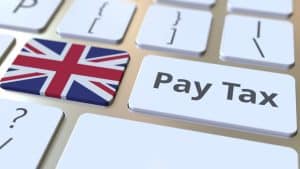
If you are an employee, your employer will have your UTR. You can find your UTR on correspondence from HMRC, or by logging into your online account.If you need to contact HMRC about your taxes, you will need to quote your UTR. Therefore, it is important to keep your UTR safe and secure
Who needs to apply for a UTR number?
Anyone that is required to file a Self Assessment tax return needs to apply for a UTR number.
Due to sole traders have unlimited liability, their personal income is not separate from their business income. This is why sole traders only need one UTR number.
Partnerships will require each partner to have their own UTR number and the partnership itself will also require also a Unique Taxpayer Reference.
How to get a UTR number
Applying for a UTR number is a simple process that can be completed online. However, not everyone needs to apply for a UTR number. Individuals who are self-employed or who are in partnership need to have a UTR number in order to file their Self-Assessment tax return. In addition, companies and trusts need to have a UTR number in order to file their Corporation Tax return.
If you are unsure whether or not you need to apply for a UTR number, you can check with HMRC. Generally, if you need to file a Self-Assessment or Corporation Tax return, you will also need to apply for a UTR number. Applying for a UTR number is quick and easy, and it will ensure that you are able to correctly file your tax return.
The following information is required ignorer to apply for a unique tax reference number:
-
Your name
-
Your date of birth
-
Your National Insurance number
-
A contact address
-
A contact phone number
-
A contact email address
-
Your business address
-
Your business telephone number
-
The date you became self-employed
-
What legal entity is the structure of your business
What to do if you’ve lost your UTR number
If you’ve lost your UTR number, don’t panic – it’s not the end of the world. There are a few different ways you can go about getting it back. The first step is to contact HMRC directly and explain the situation. They should be able to give you your UTR number over the phone or through the post. If that doesn’t work, you can try logging into your online HMRC account (if you have one) and checking for your UTR number there.
Finally, if all else fails, you can always fill out a Self Assessment tax return – your UTR number will be printed on the form. So there you have it – a few different ways to get your hands on your lost UTR number.
Sharing UTR numbers
It is important to keep your Unique Tax Reference Number (UTR) confidential. There are no photocards to prove identity in the CIS system, so it is possible for an unscrupulous individual to ‘borrow’ your UTR to obtain work and then leave you with the tax bill. This may be done with the consent of (or even pressure from) the main contractor.
Where there are individuals with similar names this is particularly a risk. The victim need not even be working in construction. Students, shop workers etc can all be at risk. All that is required is that someone borrows your UTR and uses it to get work as a subcontractor in construction.
The unfortunate victim may not find out for a number of years. Often this will happen when a large tax demand arrives and it becomes clear that someone else has been submitting tax returns in your name. At this point HMRC may already have gained a court judgment for the debt or worse made bankrupt. It can be a difficult situation to sort it out once it has taken place.
The last reason why you should not share your UTR number is if you’re a subcontractor registered for CIS. Before you can operator as a subcontractor the main contractor will need to be verify you, the verification process requires a few pieces of information, including the subcontractor’s UTR number.
UTR numbers, Company Registration Numbers, and VAT registration numbers
Unique Taxpayer Reference are not the same as a company registration number or a VAT registration number, and there are a number of differences between them:
-
Number structure: UTR numbers consist of 10 numbers, company registration numbers consist of 8 numbers or 2 letters followed by 6 numbers, and Vat registration numbers consist of 2 letters (GB or XI) followed by 9 numbers.
-
Who will require your number: Everyone that is required to complete a Self Assessment needs a UTR number. Only limited companies or Limited Liability Partnerships (LLP) have company registration numbers, and only companies registered for VAT need a VAT Number.
- Confidentiality: Whereas UTR numbers are highly confidential, Company registration and VAT number are not. There are a number of instances when you will be required to provide these numbers , but UTR numbers should only be shared in very specific cases.
Seasoned professional with a strong passion for the world of business finance. With over twenty years of dedicated experience in the field, my journey into the world of business finance began with a relentless curiosity for understanding the intricate workings of financial systems.
